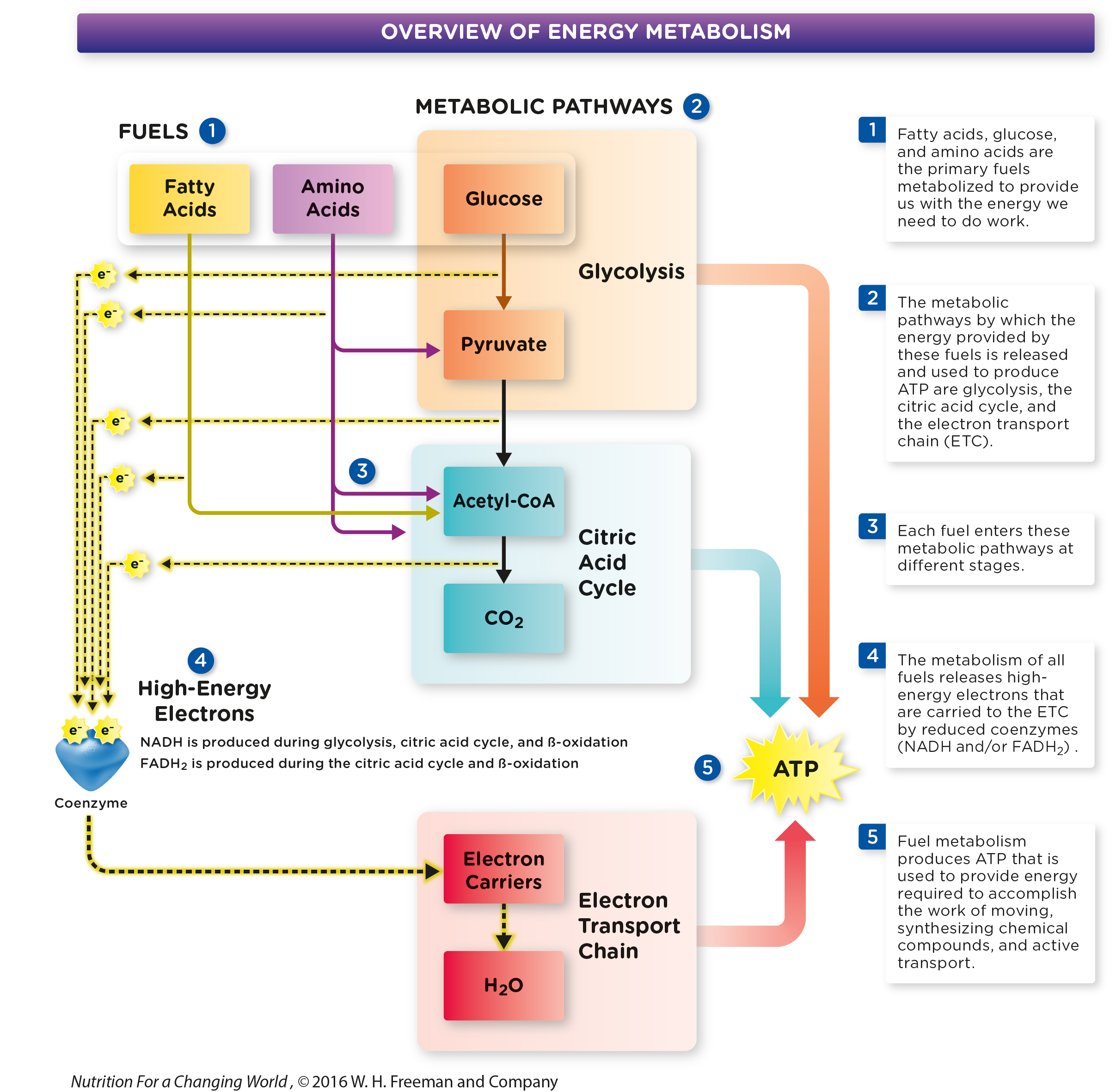OVERVIEW OF ENERGY METABOLISM
As fuels provided by our diet are broken down into smaller and smaller molecules they undergo a series of oxidation reactions. Energy to produce ATP is extracted from the fuels as they are oxidized in what is essentially a controlled burn. This gradual breakdown and oxidation of fuels allows us to capture some of the chemical energy in those fuels to do work, such as physical movement, anabolic reactions, and active transport.
Coenzymes synthesized from the vitamins niacin and riboflavin function as electron carriers and are involved in transferring electrons (and/or hydrogen atoms) from one substance to another in energy metabolism. As fuels are oxidized, high-
